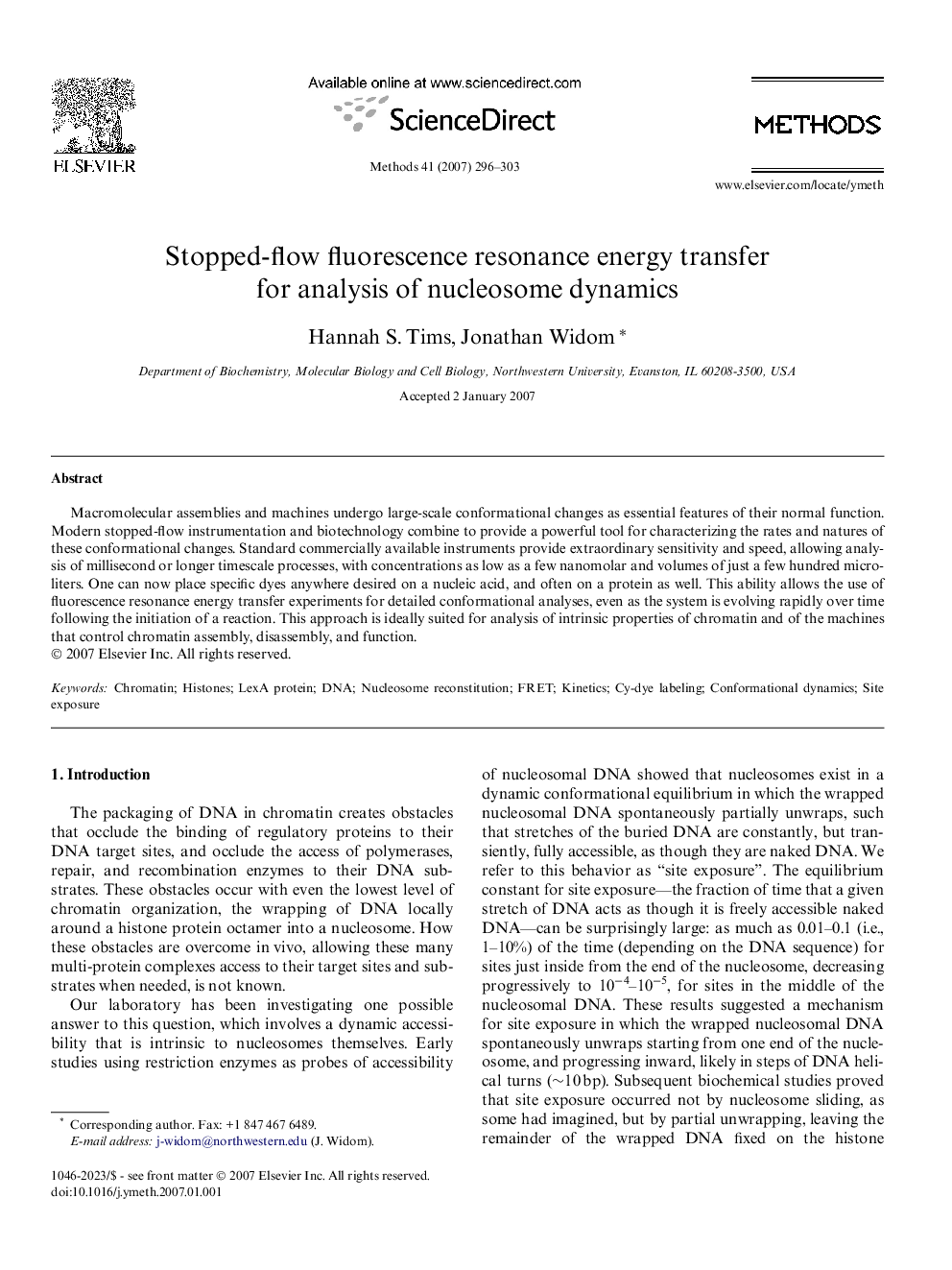| Article ID | Journal | Published Year | Pages | File Type |
|---|---|---|---|---|
| 1994370 | Methods | 2007 | 8 Pages |
Macromolecular assemblies and machines undergo large-scale conformational changes as essential features of their normal function. Modern stopped-flow instrumentation and biotechnology combine to provide a powerful tool for characterizing the rates and natures of these conformational changes. Standard commercially available instruments provide extraordinary sensitivity and speed, allowing analysis of millisecond or longer timescale processes, with concentrations as low as a few nanomolar and volumes of just a few hundred microliters. One can now place specific dyes anywhere desired on a nucleic acid, and often on a protein as well. This ability allows the use of fluorescence resonance energy transfer experiments for detailed conformational analyses, even as the system is evolving rapidly over time following the initiation of a reaction. This approach is ideally suited for analysis of intrinsic properties of chromatin and of the machines that control chromatin assembly, disassembly, and function.
